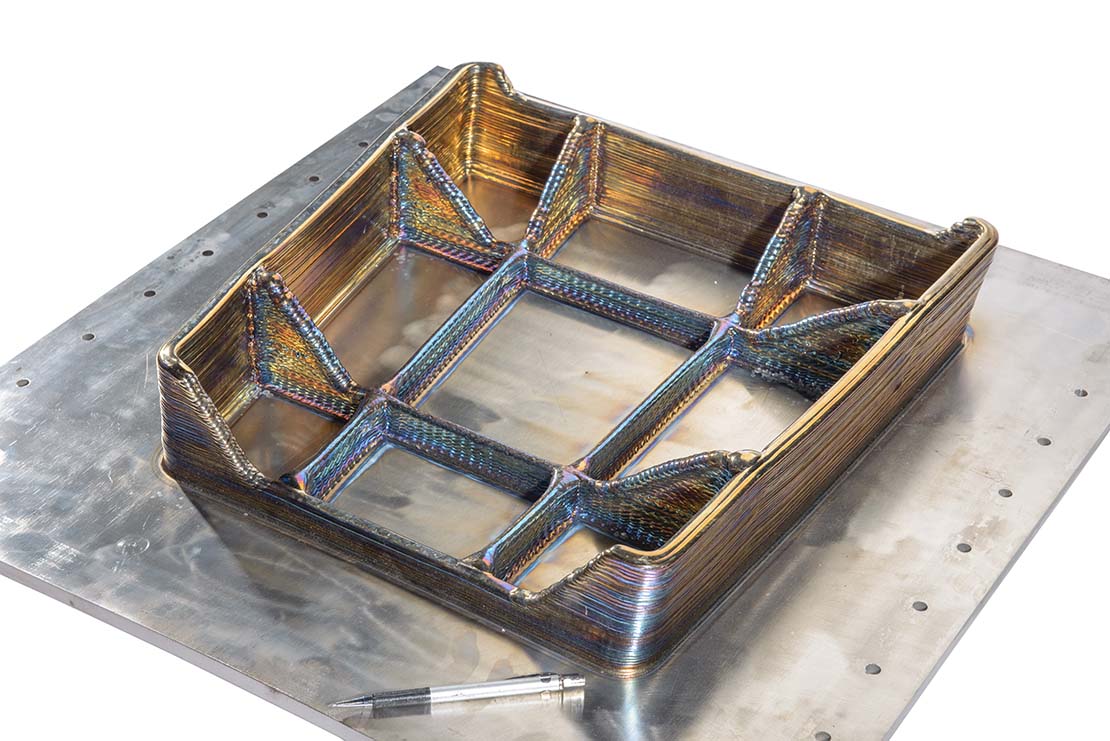In a collaboration to advance aerospace engineering, WAAM3D has joined the Landing Gear Industrial Breakthroughs project, better known as I-Break. This £22.5 million ($28.3 million) initiative, led by Airbus and backed by a consortium of industry front-runners, academic institutions, and research organizations, will explore new methods for aircraft landing gear manufacturing. With its specialized background in wire arc additive manufacturing (WAAM), WAAM3D will contribute advanced manufacturing techniques designed to strengthen landing gear components, enhance efficiency, and minimize environmental impact.
I-Break aims to develop and manufacture major components using innovative techniques such as powder hot isostatic pressing, additive manufacturing (AM), and composites. With a focus on the landing gear’s major components, main fitting, sliding piston, and actuation, the project will address key competitive factors like development time, recurring cost, and environmental impact. I-Break will develop solutions for the Next-Generation and Zero Emissions aircraft ready for exploitation.
Funded through the UK’s Aerospace Technology Institute (ATI) program, the I-Break project serves a dual purpose. It not only acts as an incubator for experimental technologies but also seeks to bring a new era of landing gear manufacturing to the aerospace sector. This initiative is part of a larger £218 million ($274 million) investment by the UK government to drive aerospace research and development. Aligning with UK Prime Minister Rishi Sunak’s goals for economic growth, the investment aims to catalyze an additional £20 billion ($25 billion) in private sector funding and create over 100,000 jobs nationwide while enhancing the country’s strengths in technologies like AI, quantum computing, and advanced manufacturing.
WAAM3D has several important roles in the project. The company aims to refine its specialized metal 3D printing WAAM process to make it faster and more suitable for large-scale manufacturing, like creating airplane landing gears. Alongside this, it focuses on the quality of the materials produced through this method to ensure the end product is strong and reliable, which is crucial for something as important as aircraft parts. Third, it is advancing techniques for real-time quality checking during the manufacturing process, also known as “online non-destructive testing techniques.” This ensures that any defects can be caught early without harming the piece being tested. Lastly, using its specialized RoboWAAM systems, it produces sample parts to show off what its technology can do. These samples serve as practical examples of how WAAM3D’s technology can be used in the aerospace industry.
The collaboration doesn’t stop at WAAM3D; the project also features crucial contributions from academic institutions like Cranfield University and the University of Strathclyde. While Cranfield focuses on novel WAAM processes and solutions, Strathclyde works on innovative non-destructive testing techniques. Peak NDT, another industry leader, brings its expertise in high-performance ultrasonic instrumentation to the combo, working on online non-destructive testing hardware systems.
The project will be completed in 2026 and aims to develop and manufacture major landing gear structural components currently produced using large forgings. New techniques such as AM, powder hot isostatic pressing, and composites will be explored, targeting a 30% reduction in the industrial carbon dioxide footprint and a quicker time-to-market for new aircraft models.
In recent years, the aerospace industry has seen several initiatives aimed at pioneering advanced manufacturing techniques and improving environmental efficiency. For example, the European Union’s Clean Sky program has combined AM techniques to develop more environmentally friendly aircraft components. Similarly, NASA’s Advanced Air Transport Technology project explores the potential of AM in creating efficient aircraft structures. Meanwhile, the Federal Aviation Administration (FAA) ‘s Continuous Lower Energy, Emissions, and Noise (CLEEN) program also collaborates with the industry to fast-track the adoption of cleaner technologies, including additive methods.
In the United States, manufacturing institutes like America Makes are geared toward pushing the boundaries of AM for aerospace applications. Meanwhile, the UK’s National Composites Centre is perfecting advanced manufacturing methods for various industries, including aerospace. These multifaceted efforts underscore a global commitment to harnessing cutting-edge manufacturing technologies for a more sustainable and efficient future in aviation.
While it’s too early to predict the full scope of I-Break’s impact, its promise is in its innovative approach and the multi-sector collaboration driving it. WAAM3D’s role, with its focus on advanced manufacturing technologies, adds another layer of expertise that could be key in shaping the future of aircraft landing gear.
Subscribe to Our Email Newsletter
Stay up-to-date on all the latest news from the 3D printing industry and receive information and offers from third party vendors.
Print Services
Upload your 3D Models and get them printed quickly and efficiently.
You May Also Like
Consolidation in AM: How 2025 Is Shaping the Industry’s New Normal
The first half of 2025 has been marked by a clear shift in the additive manufacturing (AM) industry. Companies are no longer just focused on developing new tech by themselves....
Etsy Design Rule Change Reduces Selection of 3D Printed Goods
Online marketplace Etsy has implemented a rule change requiring all 3D printed goods on the site to be original designs. The update to the site’s Creativity Standards states, ¨Items produced using...
U.S. Congress Calls Out 3D Printing in Proposal for Commercial Reserve Manufacturing Network
Last week, the U.S. House of Representatives’ Appropriations Committee moved the FY 2026 defense bill forward to the House floor. Included in the legislation is a $131 million proposal for...
Transforming From Tourist to Native: Duro CEO Michael Corr Explains Why the Company Rebuilt its PLM Software on AI
In these early innings of the AI boom, many market analysts have expressed concern that AI spend has gotten too far ahead of the technology’s proven ability to deliver significant...


































